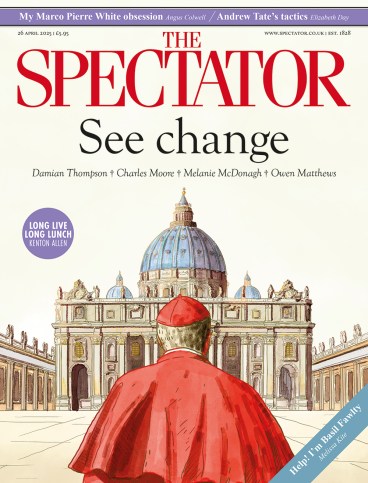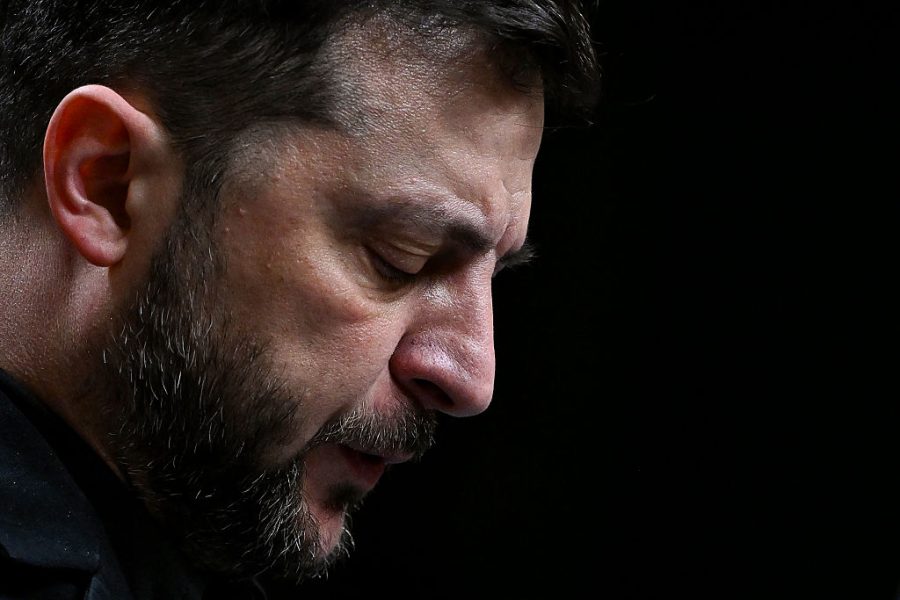
On the morning of 7 May 1821 an urgent task was performed at Longwood House on St Helena. A day and a half previously, the celebrated prisoner for whom this dwelling had been built had died. Obviously it was necessary to make his death mask, and fortunately a British military doctor, expert in such matters, was at hand to do so. So it was that in times to come every bourgeois home in France ‘had its plaster Napoleon’, as Alain Corbin writes in this brief but highly original book.
The proliferation of such casts was a feature of the age. Some homes became ‘virtual museums of the dead’. Artists’ sitting rooms and studios frequently contained a moulding of the emaciated features of Théodore Géricault; musical households would naturally have one of Beethoven. Though Goethe disapproved of the practice of making death masks, believing that death was ‘a very poor painter’, he nonetheless had life masks made of his face at the ages of 59 and 67 (while inevitably another cast was made after he died at 83).
The head was not the only part to be reproduced in this way. Hands were also popular. ‘Clasped or intertwined,’ Corbin notes, these ‘formed the centrepiece of many a private altar’, perhaps commemorating an engagement or constituting ‘a tangible proof of affection’. If that sounds surreal it’s because surrealism was often just a slight exaggeration of 19th-century normality.
Weirder still than hanging a disembodied plaster hand on the wall was the cult of the leg and foot. Casts of these appendages, usually hidden under a crinoline, held an erotic charge. Consequently there was great demand for (alleged) plaster replicas of the feet of such celebrities as the actress Rachel Élisabeth Félix (1821-58).
In art schools, live models were sometimes replaced by casts of limbs and torsos or – as far as was technically possible – entire naked bodies. From the point of view of the model, remaining utterly immobile while the casing hardened around the flesh must have been an ordeal. This explains why, Corbin notes, life casts are ‘often tense around the eye and the mouth’ and the skin entirely covered with goosebumps.
Some such casts are beautiful and can have a compelling presence in a way that most 19th-century sculpture does not. Nonetheless, there was ferocious resistance to the notion that they might themselves be works of art – much as there was to the suggestion that photographers might be artists. Indeed, there were deep similarities between the two. Photography was a technology for copying two-dimensional reality, but plaster, like 3D-printing today, could reproduce volume, texture and form.
The technique allowed selected masterpieces from the past to multiply and spread around the world. Thus Michelangelo’s statue of David went on display in the cast courts of the V&A (plus a plaster fig leaf, requested by Queen Victoria to be added when dignitaries came to visit). Somewhat later an identical plaster David went on view in the Italian courtyard of the Pushkin Museum, Moscow, together with facsimiles of many of the famous sculptures of the Renaissance.
During the 19th century casts became ubiquitous. Doctors used them, as did phrenologists, art historians, zoologists, anthropologists and botanists. There were casts of vegetables, diseased limbs, plants and the heads of indigenous people encountered by explorers (one British collector amassed 400 of those). Animals, less cooperative than life models, had to be chloroformed or dead before they could be cast.
Corbin suggests that the years 1815 to 1855 in France should be dubbed the ‘reign of plaster’. The term was applicable, up to a point, in Britain too. Like contemporary architecture in Paris, the buildings of the period we call ‘Regency’ were the quickly and cheaply erected products of a construction boom. High Victorians and modernists thought they were shoddy, partly because they relied so much on moulding – stucco outside, plaster within – rather than solid stone or brick. Corbin also has a specifically French political metaphor in mind. Plaster, he argues, stands for the restored Bourbon monarchy and the regime of Louis-Philippe because those governments were fragile imitations of what had gone before.
For Victor Hugo in Les Misérables, the perfect symbol for those times was the ‘Elephant of the Bastille’. This was a huge, decaying plaster model for a bronze monument proposed by Napoleon but never actually carried out. It loomed over the site of the demolished prison. ‘The hollow monster,’ Corbin writes, ‘represented the inability to create anything solid in the first half of the 19th century.’
The difficulty was less evident elsewhere, in early railway-age Britain, for example. The more valuable aspect of this essay is the way it draws attention to the vast, half-forgotten subject of casts and casting. It’s a timely subject as we ponder whether a high-tech imitation of works such as the Parthenon Marbles would be a valid substitute for the real objects. However, it would have been useful to have some illustrations of the extraordinary things described, including that elephant.







Comments